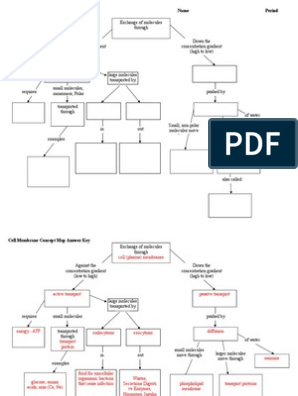Homeostasis And Transport Concept Map
Join to access all included materials in this biology learning exercise students complete a concept map on cellular transport.
Homeostasis and transport concept map. Active passive transport bulk transport movement of material against a concentration gradient which goes low to high. To stay alive a cell must exchange materials such as. This resource is only available on. Passive transport occurs when substances cross the plasma membrane without any input of energy from the cell.
Homeostasis and transport concept map. Movement of a substance by a vesicle to the inside of a cell. Concept map connecting transport terms show concept map how cells maintain homeostasis concept map of homeostasis use the following terms to concept map that shows how a cell regulates its inter community experts online right now. Diffusion is the movement of molecules from an area of higher concentration to an area of lower concentration.
Homeostasis and cell transport 97 passivetransport cell membranes help organisms maintain homeostasis by controlling what substances may enter or leave cells. An example is the sodium potassium pump. 205 views 291 downloads additional tags. This difference in the concentration.
Cell membranes help organisms maintain homeostasis by controlling what substances may enter or leave cells. Various types of cell transport are summarized in the concept map in figure pageindex 2. This homeostasis and transport concept map graphic organizer also includes. Biology cellular transport homeostasis and transport.
Homeostasis and transport concept map graphic organizer for 6th 10th grade this homeostasis and transport concept map graphic organizer is suitable for grade. Homeostasis transport concept map using the terms provided below complete the concept map showing the characteristics of cell transport. They fill in 11 blanks with the correct terminology from the given list. Some substances can cross the cell membrane without any input of energy by the cell.
Causes a cell to shrink because of osmosis c. While passive does not require energy. Protein used to transport specific substances across a membrane f. Diffusion the simplest type of passive transport is diffusion.
The movement of such substances across the membrane is known as passive transport. In this biology activity students complete a concept map on cellular transport. Movement of a substance by a vesicle to the outside of a cell d. Some substances can cross the cell membrane without any input of energy by the cell in a process known as passive transport.
An example of a cell membrane pump e. This process requires energy atp as it uses transport proteins. No energy is needed because the substances are moving from an area where they have a higher concentration to an area where they. Passive transport is explained in this section and active transport is explained in the next section active transport and homeostasis.
